Pennies Worth $6,000+? Latest Valuable Pennies Sold at Auction.
Mar 4th 2024
Valuable Pennies Sold at Auction in 2024
From pennies found in old jars to those hidden in collections, these are no ordinary coins. They're rare, unique, and have fascinating stories that make them worth so much to collectors. Take a look at these wheat pennies sold in auction in February 2024:
1909-S 1C VDB MS64 Red and Brown NGC - Sold For: $2,640.00

The 1909-S Wheat Penny differs slightly from other wheat pennies from the same year, but it can easily be distinguished. This penny includes an “S” mint mark below the year, signaling that it was minted in San Francisco. It also lacks the letters “V.D.B.” near the bottom edge of the coin’s reverse, whereas the initials of designer Victor D. Brenner appeared on two other pennies that went into circulation that year.
Learn more about wheat penny value >
1909-S 1C VDB MS63 Red and Brown NGC - Sold For: $2,400.00

1913-D 1C MS66 Red PCGS - Sold For: $6,300.00
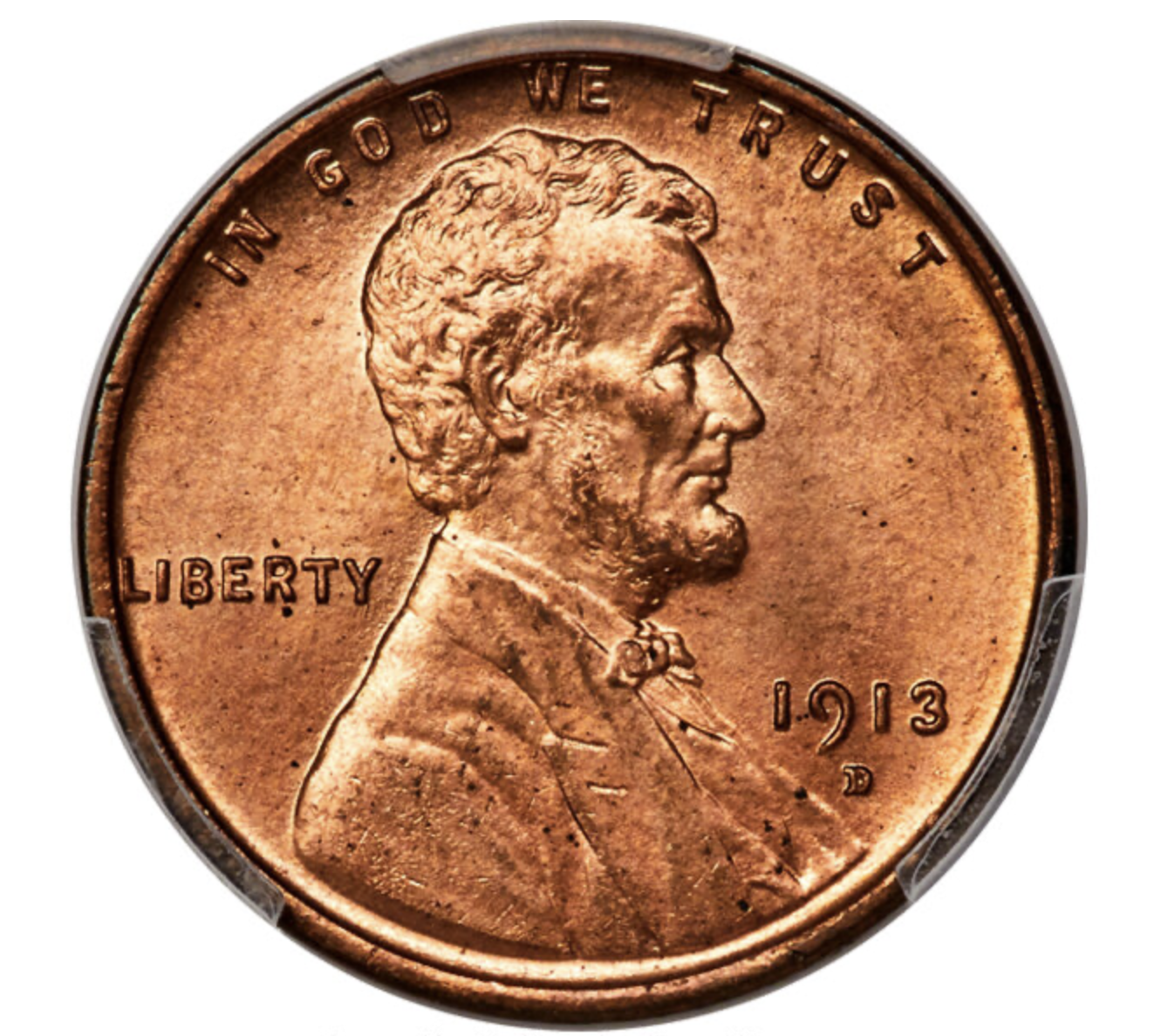
1913-D LINCOLN CENT, MS66 RED RARE, AMONG THE FINEST CERTIFIED
The 1913-D Wheat Penny is most often encountered in varying shades of lighter red and brown when in Mint State examples. When searching for your 1913-D Wheat Penny, cherrypicking is advised to ensure a sharp strike and attractive surfaces.
The 1913-D Wheat Penny value ranges from the dollars to upwards of $20,000 for the highest grade Full Reds of the coin. This is a very affordable coin that can bring value to your collection, as well as provide the opportunity to complete the collection without breaking the bank. When you’re looking for a 1913-D Wheat Penny, look for an attractive luster and sharp strike.
Learn more about wheat penny value >
1914-D 1C AU58 PCGS - Sold For: $2,520.00
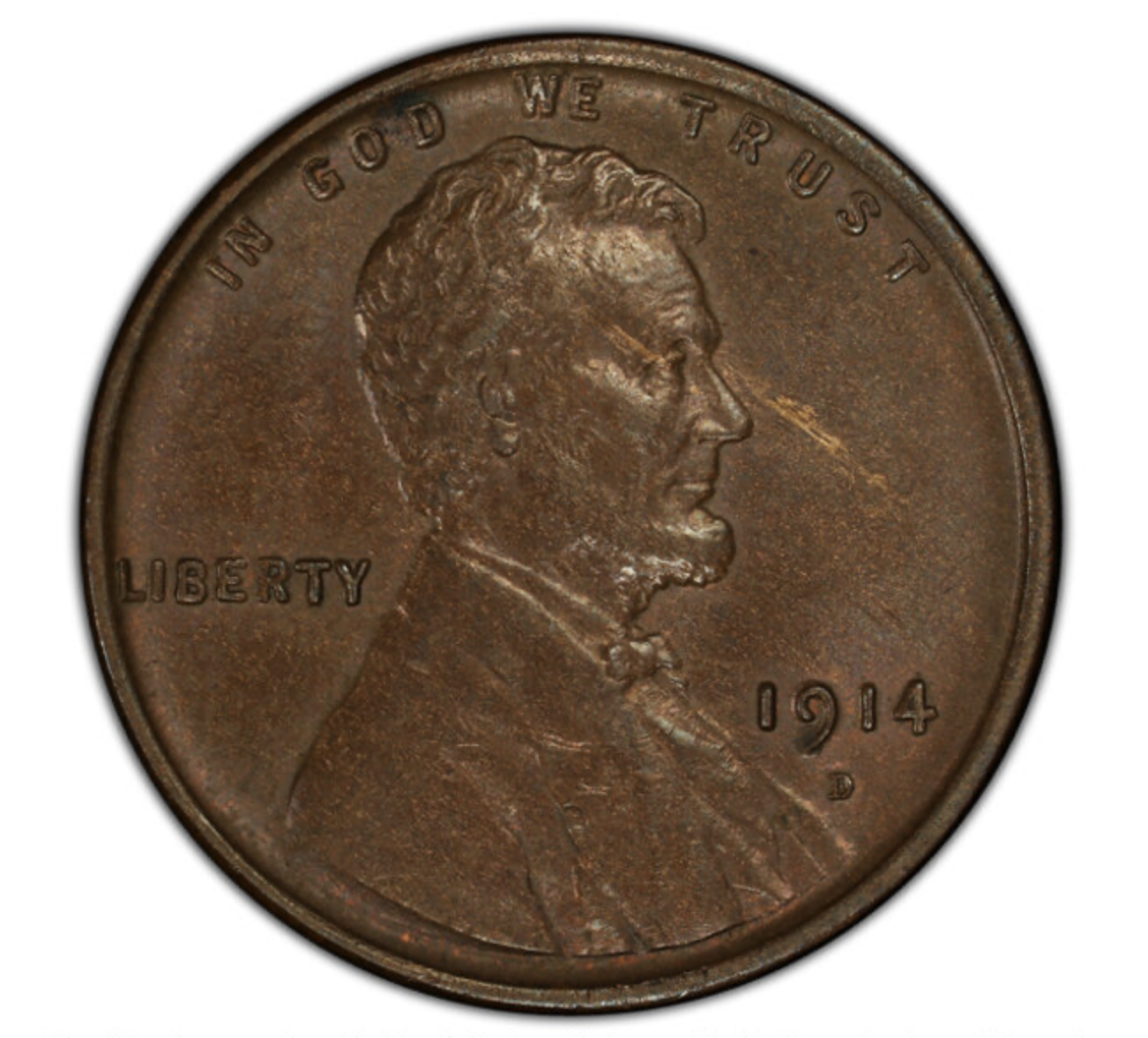
The 1914-D Wheat Penny is an extremely valuable coin within the Wheat Penny series and can cost upwards of $150,000 for a full red high grade version. When searching for this coin, it’s important to get it authenticated as there are many counterfeits out there. The Wheat Penny was designed by Victor David Brenner. President Theodore Roosevelt wanted to prepare new coin designs that had more artistic merit. He chose Brenner based on a plaque he created with Lincoln’s profile. The Wheat Penny depicts a bust and profile of Abraham Lincoln on the obverse, with the D mint mark under the date. The reverse features two stalks of durum wheat.
1914-D Wheat Penny Worth
The 1914-D Wheat Penny value is incredibly high, with it bringing in over $158,000 in the past. This coin is a key date within the series making it valuable and a treasured piece for the Wheat Penny series. Authenticating any 1914-D Wheat Penny you find will be important to ensure you are actually getting the Denver Mint coin that is so elusive. Once you’ve found it, you’ll have a special piece of history added to your collection.
Learn more about wheat penny value >
1914-D 1C AU58 NGC - Sold For: $1,980.00

1914-D 1C MS64+ Red and Brown PCGS. CAC
Sold For: $6,300.00
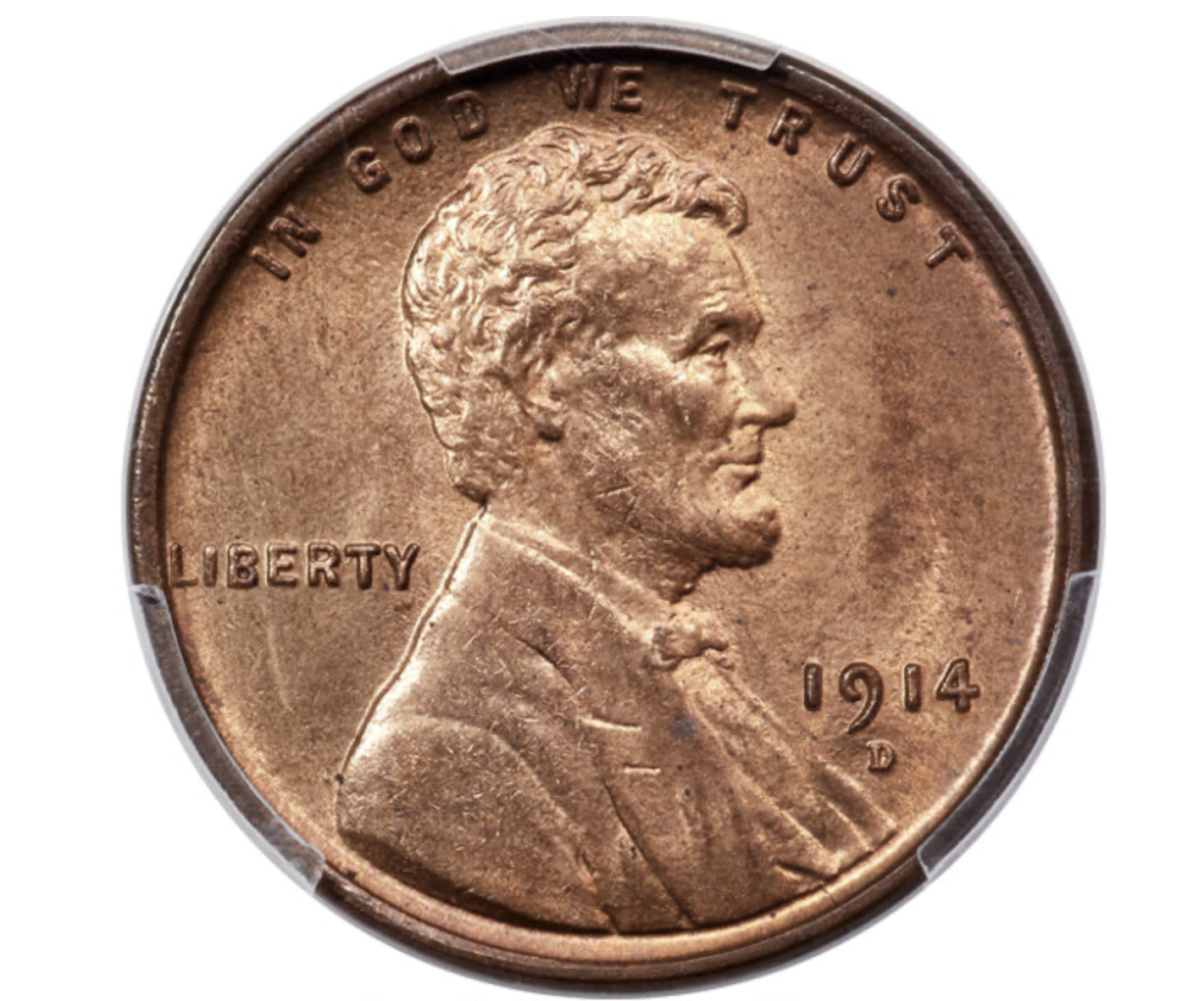
1914-S 1C MS64+ Red and Brown PCGS - Sold For: $2,520.00
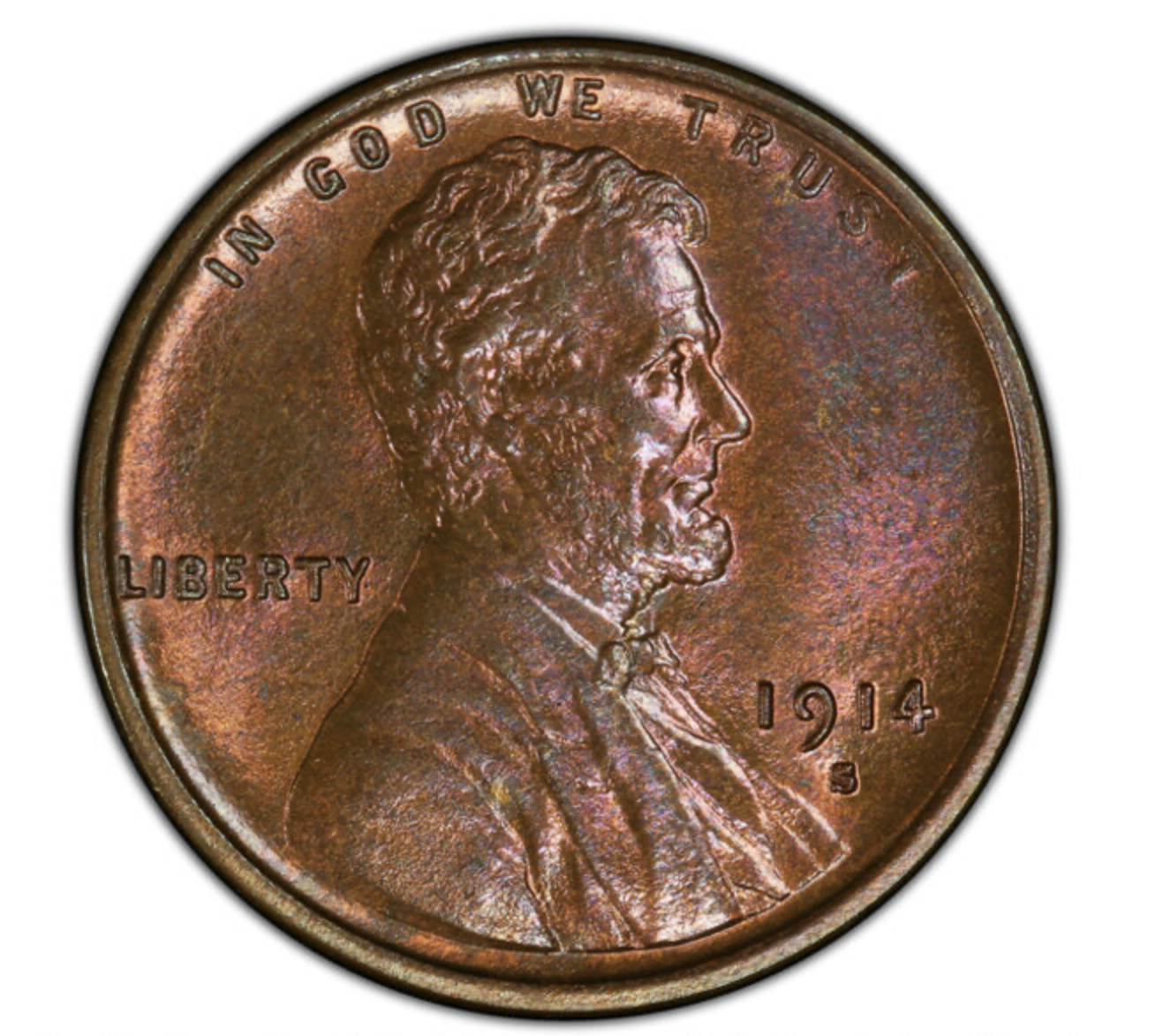
The 1914-S Wheat Penny had a higher mintage than the 1914-D Wheat Penny by about 3 million, and fewer minted than the Philadelphia 1914 that had over 75 million. But all three are great rarities that can be very difficult to find. When seeking out these coins, it’s important to authenticate that you are getting the coin you think you are. With high values and price tags, counterfeits are expected. The Wheat Penny was designed by Victor David Brenner. President Theodore Roosevelt wanted to prepare new coin designs that had more artistic merit. He chose Brenner based on a plaque he created with Lincoln’s profile. The Wheat Penny depicts a bust and profile of Abraham Lincoln on the obverse, with the S mint mark under the date. The reverse features two stalks of durum wheat.
1914-S Wheat Penny Worth
The 1914-S Wheat Penny value ranges to upwards of a hundred thousand dollars for the highest grade Full Red versions. Most of the Wheat Pennies can be found at affordable prices in circulated grades, making a full collection more accessible to those who don’t want to spend hundreds of thousands of dollars. This coin would make a valuable addition to a Wheat Penny series collection, especially combined with the 1914 and 1914-D Wheat Penny.
Learn more about wheat penny value >
1917-S 1C MS65 Red PCGS. Sold For: $6,300.00
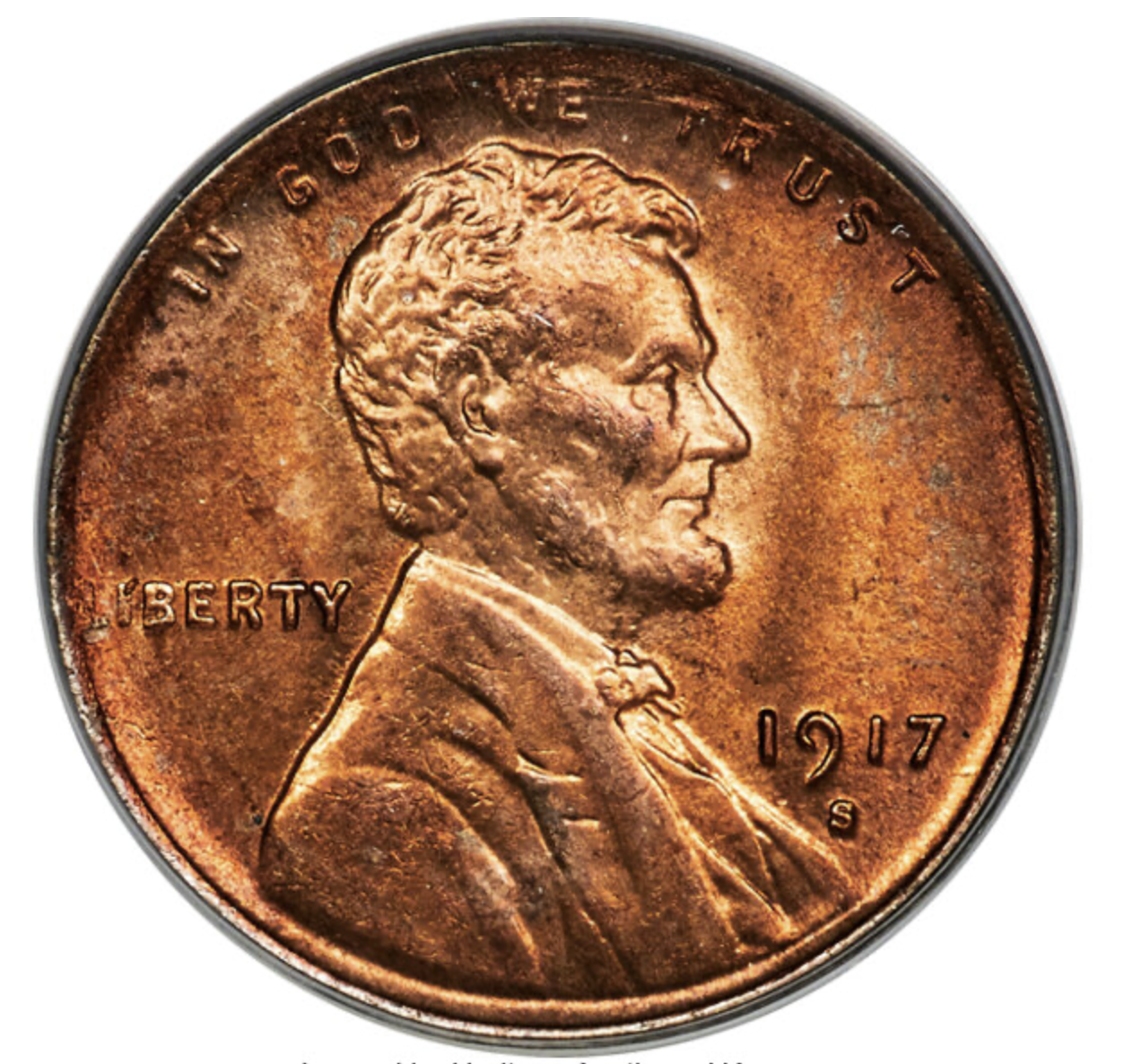
The 1917-S Wheat Penny value ranges to upwards of $8,000 for higher Mint State grades of the brown variety. The prices can reach as high as $31,000 or more for red varieties in higher grades, although the highest grades are very difficult to find and will most likely drive the prices up even higher if located. This is a valuable coin that is well worth the effort to find.
1923-S 1C MS64 Red and Brown PCGS. CAC.
Sold For: $1,446.00.
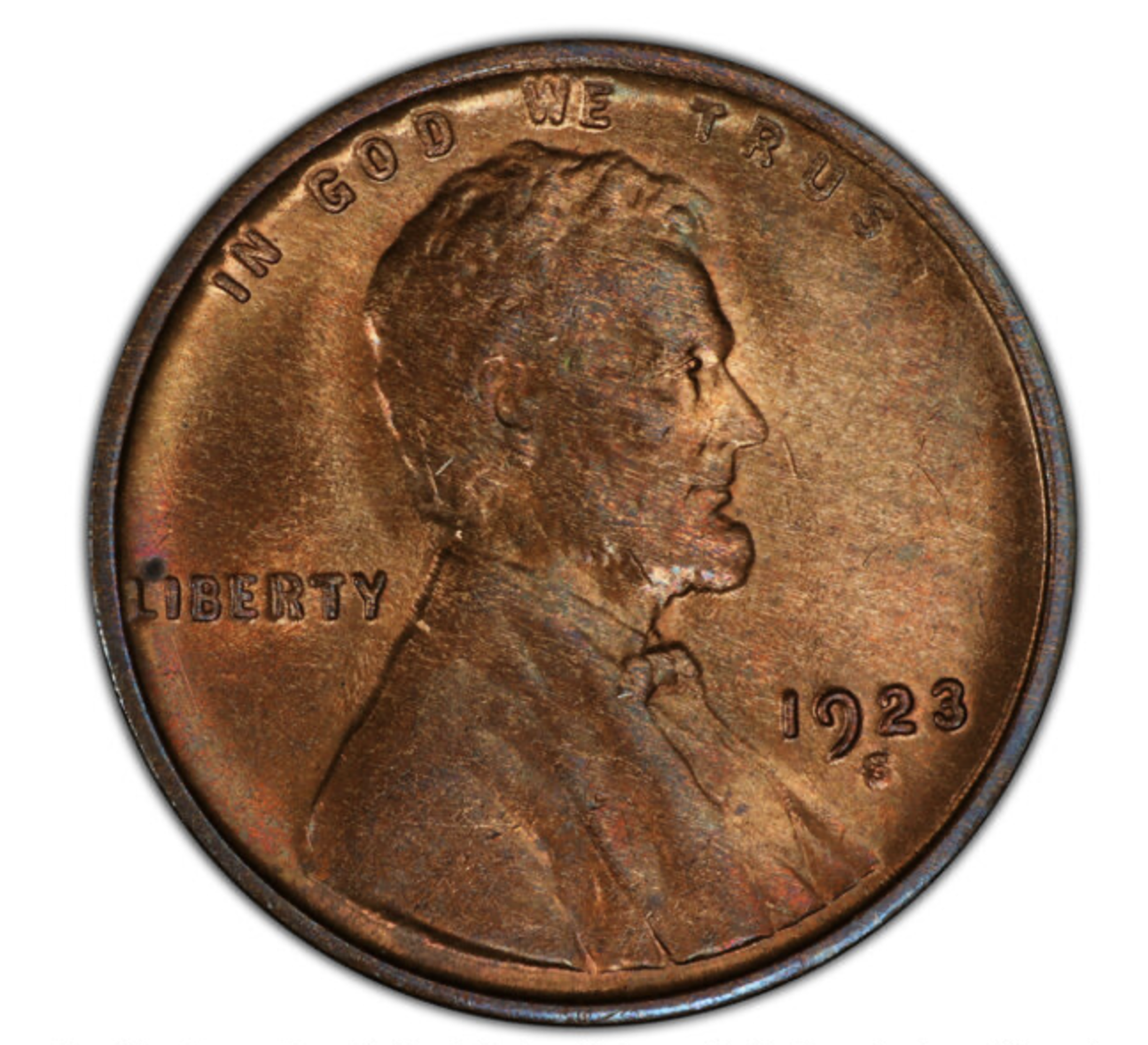
The 1923-S Wheat Penny value can go upwards of $67,000 for the higher grade Mint State coins available in brown and red varieties. Cherrypicking is advised since this coin is notorious for not having a full strike, but it is possible to find some beautiful examples to add to your collection.
1925-D 1C MS65+ Red PCGS. Sold For: $3,360.00.
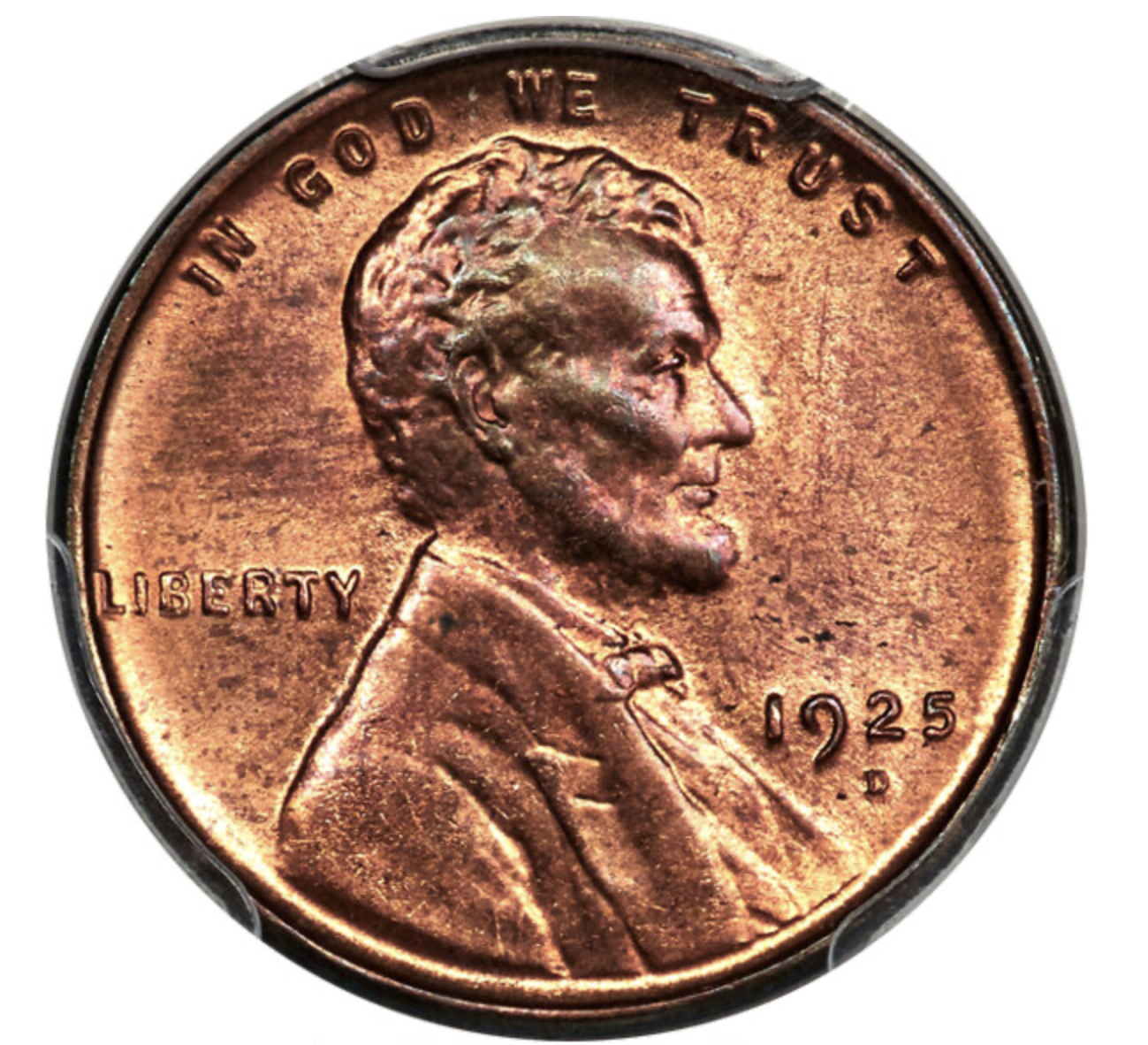
The 1925-D Wheat Penny value ranges from about $2,000 to $75,000, which is quite a large jump in prices. Brown varieties are often more affordable than red varieties, and the higher the grade, the higher the cost. The full reds are rare in the highest grades and would most likely drive the cost up even more. The 1925-D Wheat Penny is a worthwhile coin to have in your collection for its value and desirability.
1943-D 1C MS68 PCGS. CAC. Sold For: $3,720.00.

1953 1C MS67 Red PCGS. Sold For: $2,400.00.
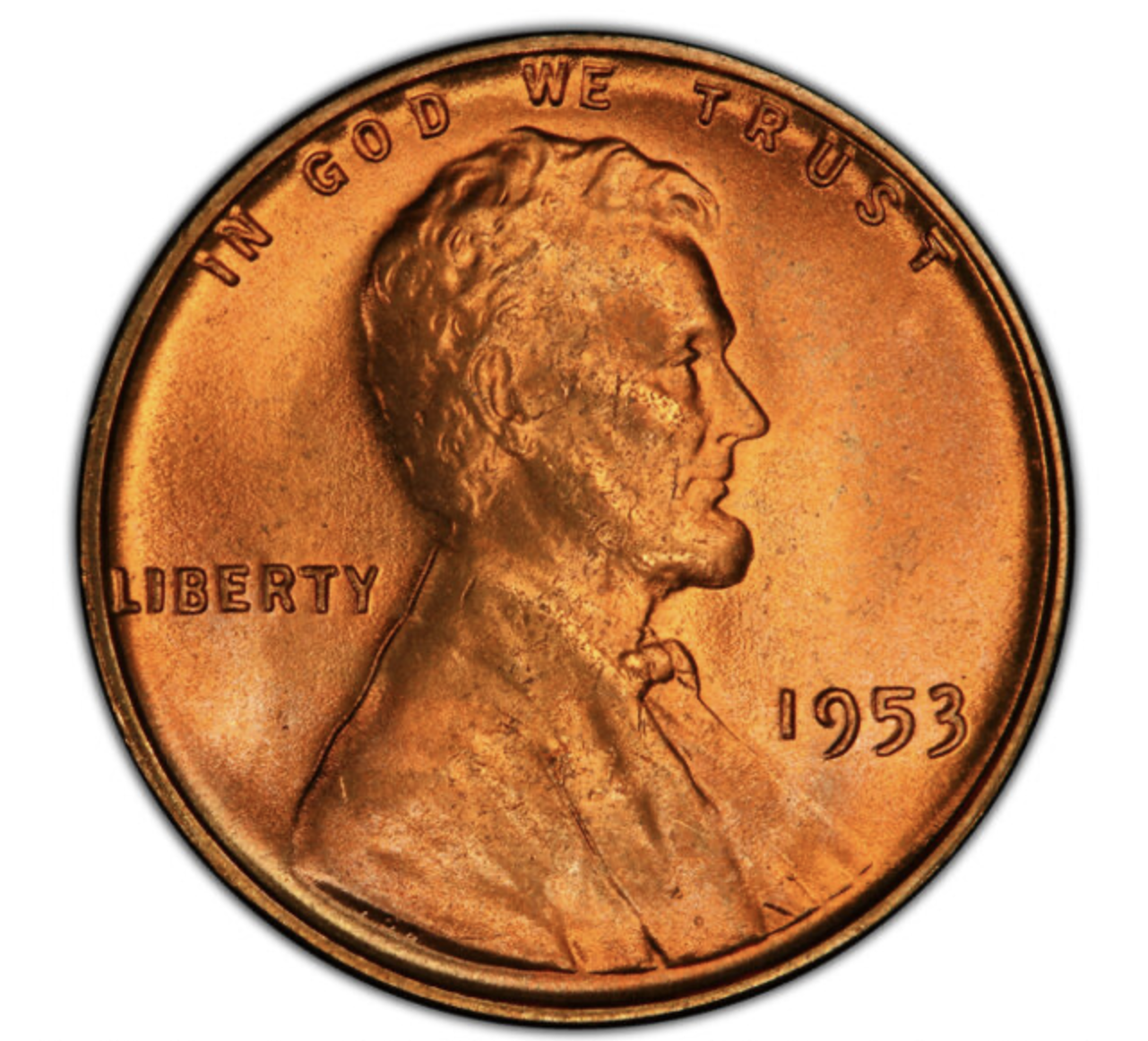
The 1953 Wheat Penny value ranges from around one thousand dollars to upwards of fourteen thousand dollars depending on the coloring and the grade. The Wheat Penny comes in colors ranging from brown to brown-red to red, with the red varieties typically commanding the highest prices. The Wheat Penny series is an affordable series for those looking to build a circulated grade coin collection for only a few hundred dollars, and is also a steal for serious collectors as well.
1955 1C Doubled Die Obverse, FS-101, MS61 Brown NGC. Sold For: $3,120.00.
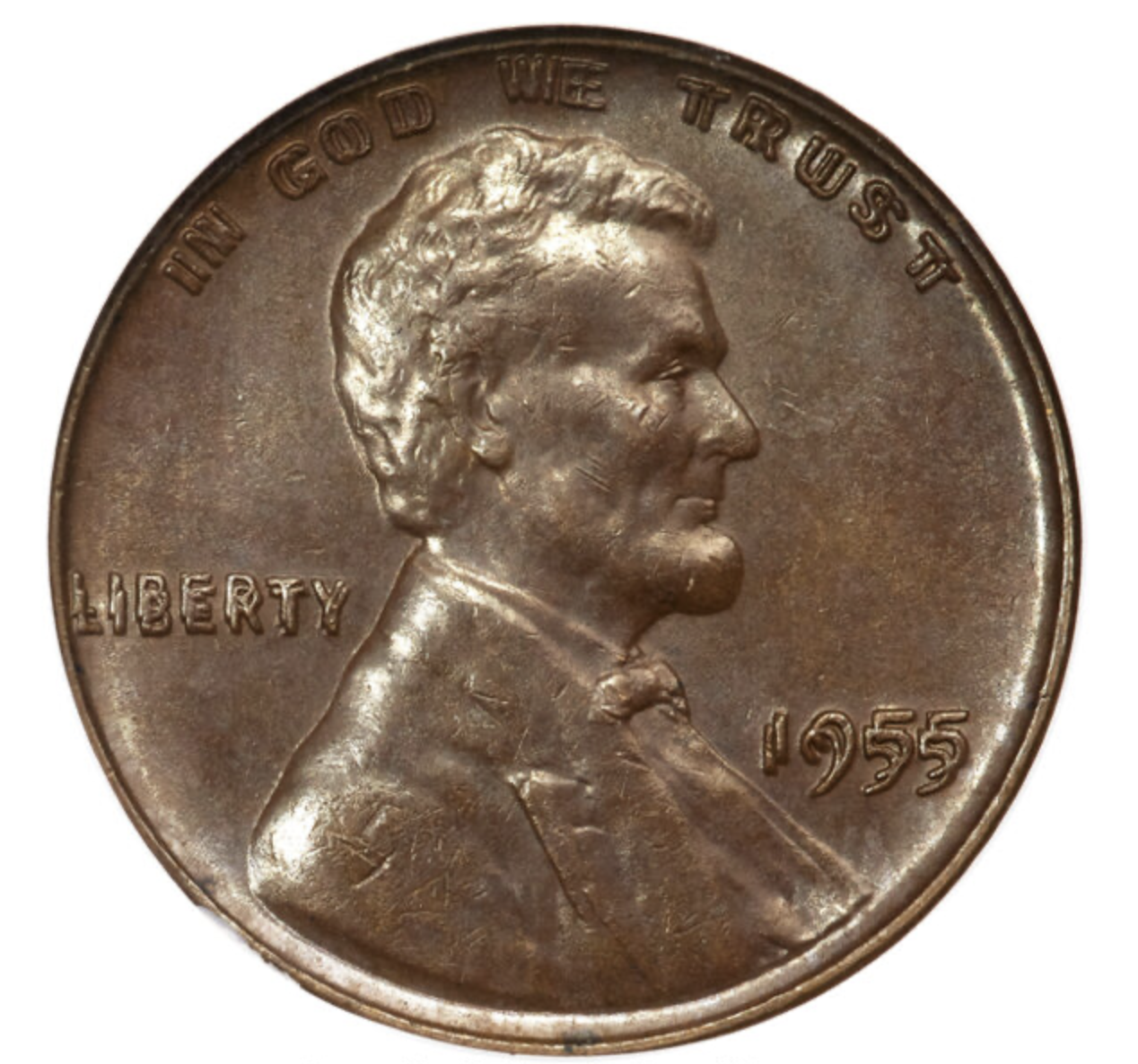
The 1955 Wheat Penny value ranges from around two thousand dollars to eight thousand dollars for the highest grades documented of this coin. The Wheat Penny comes in colors ranging from brown to brown-red to red. The Full Red versions typically command a higher price compared to the other colors. The 1955 Wheat Penny is an attractive coin that is worth the effort to find with a sharp strike and nice details.
1955 1C Doubled Die Obverse, FS-101, MS64 Brown PCGS. Sold For: $5,520.00.
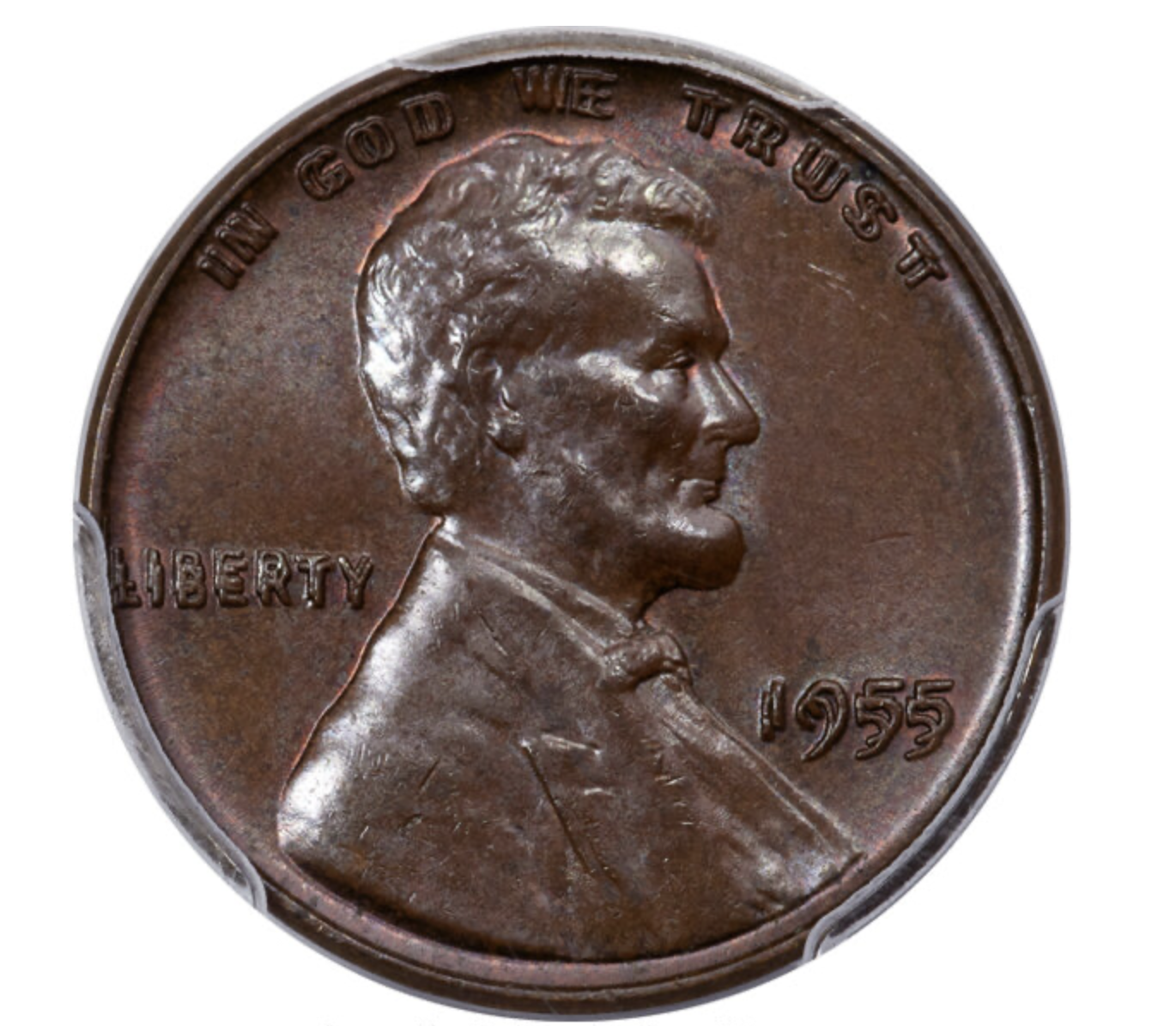
Many collectors throughout the United States collect Lincoln Cents. The main reason for this is affordability. Complete sets of the Lincoln Pennies can often be put together for only a couple hundred dollars in circulated quality. Some collectors look to spend a little more money and put together a certified Lincoln Penny set graded either by NGC or PCGS. The Lincoln Penny key dates >
Resource: Heritage Auctions
Other Article You May Like:
2024 American Women Quarters
Guide to Collecting Steel Pennies
Susan B Anthony Coin Value and Prices
FAQs
What specific criteria or features make these pennies so valuable to collectors?
The value of these pennies to collectors is determined by a combination of factors that include rarity, historical significance, condition, and specific mint errors or variations. For instance, certain pennies were minted in very low quantities or in specific locations, making them rare finds today. Historical significance also plays a role; pennies from certain years may have been part of pivotal moments in U.S. history, adding to their allure. The condition of the coin is crucial, with well-preserved examples fetching higher prices. Additionally, mint errors, such as misstrikes, or variations, like the presence or absence of specific marks, can significantly increase a penny's value. Collectors prize these unique attributes, as they not only represent a piece of history but also offer the thrill of hunting for those rare characteristics that make a penny particularly valuable.
How does the grading system work for these pennies, and what does each grade mean?
The grading system for these pennies is a standardized way to assess their condition, with grades assigned by professional grading services like NGC (Numismatic Guaranty Corporation) and PCGS (Professional Coin Grading Service). The scale typically ranges from 1 to 70, with higher numbers indicating a coin in better condition. The terms "Red," "Brown," and "Red and Brown" refer to the coin's original copper color and its preservation. "Red" pennies are those that have retained most of their original luster and hue, "Brown" pennies have oxidized or changed color significantly, and "Red and Brown" are in between, showing some original color with areas of oxidation. These color designations, along with the numerical grade, help collectors determine a coin's aesthetic appeal and state of preservation, which are critical factors in its overall value.
Are there any tips or advice for new collectors on how to start collecting valuable pennies or how to identify potential valuable finds?
For new collectors interested in valuable pennies or starting their own collection, the key is education and patience. Learning about the history of pennies, understanding the grading system, and knowing what makes certain pennies more valuable than others are essential first steps. Beginners should also familiarize themselves with resources and tools available for collectors, such as price guides, auction records, and reputable coin dealers. Joining coin collecting forums or local clubs can provide valuable insights and advice from more experienced collectors. When it comes to identifying potential valuable finds, careful examination and authentication are crucial, especially given the prevalence of counterfeits for highly valuable coins. Starting with more common and less expensive coins can be a good way to gain experience before investing in higher-value items. Building a valuable collection often takes time and involves both learning from mistakes and celebrating successes along the journey.


